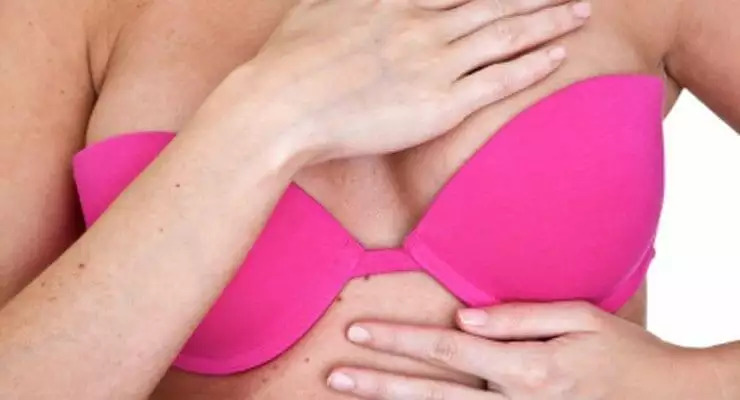Did you know that 1 in 8 women will develop breast cancer over the course of their lifetime? It’s the most commonly diagnosed cancer in women.
Experts agree that early detection is the best defense against this deadly disease, and since October is Breast Cancer Awareness Month, we want to encourage moms everywhere to give themselves a monthly breast self exam (BSE).
Do you know how to do a BSE properly? If not, here are the guidelines that every women needs to know:
When Should I Do a BSE?
Doctors recommend performing a BSE once every month. For pre-menopausal women, the best time to perform the self exam is a few days after your period ends when hormone levels are more stable and the breasts are less tender. Post-menopausal women can do the exam at any time, but be consistent. You should pencil in a regular date for your BSE on your calendar, to make sure you remember. It only takes 15 minutes and it could save your life. Who doesn’t have time for that?
Visual Exam
The first step is a visual exam. Strip down to your waist and stand in front of a big mirror which lets you see both breasts. Stand with both hands on your hips and look at the size, shape, drape, symmetry, and contour of your breasts. Also, look at the nipple and areola color and texture. Notice if there are any unusual bumps or indentations. Note any changes that you see. Next, raise your arms over your head, checking the same things. Inspect the area near your lower armpits to see if there is any swelling in your lymph nodes.
Manual Exam
Next, raise your left arm over your head and use your right hand fingers to apply gentle pressure to the left breast. Stroke from top to bottom, moving from the inside of your breast all the way across to your armpit. Make note of any changes in texture of your breast, like lumps or indentations. Switch sides and repeat using your left hand on the right breast. This technique works best in the shower as you can use soap and water to slide around the breast area easily, creating less friction. Next, check your nipples. With your index and middle finger, gently squeeze your nipple and pull forward. Note if the nipple springs back to place or pulls back into the breast. Also check for unusual discharge. Any changes should be noted like pain, redness, unusually flaky skin near the nipple area, swelling, and thickening of the skin.
Laying Down Exam
While lying in your bed, place a pillow beneath your head and shoulders. Raise your left arm to check your right breast and vice versa. Do the exam the same way you would do if you were standing, noting any changes or irregularities you may come across.
BSE’s are Important for EVERYONE
If you think you’re too young to get breast cancer or to start doing self breast exams, you’re wrong. While breast cancer is less common for younger women, it is not impossible to get it. Additionally, women in their thirties develop more aggressive breast cancers than older women, possibly explaining the lower survival rate among younger women. If you notice anything unusual during your BSE, make a doctor’s appointment and have him or her check it out. Keep up with annual doctor’s visits, as well as mammograms once a year after you turn 40.





